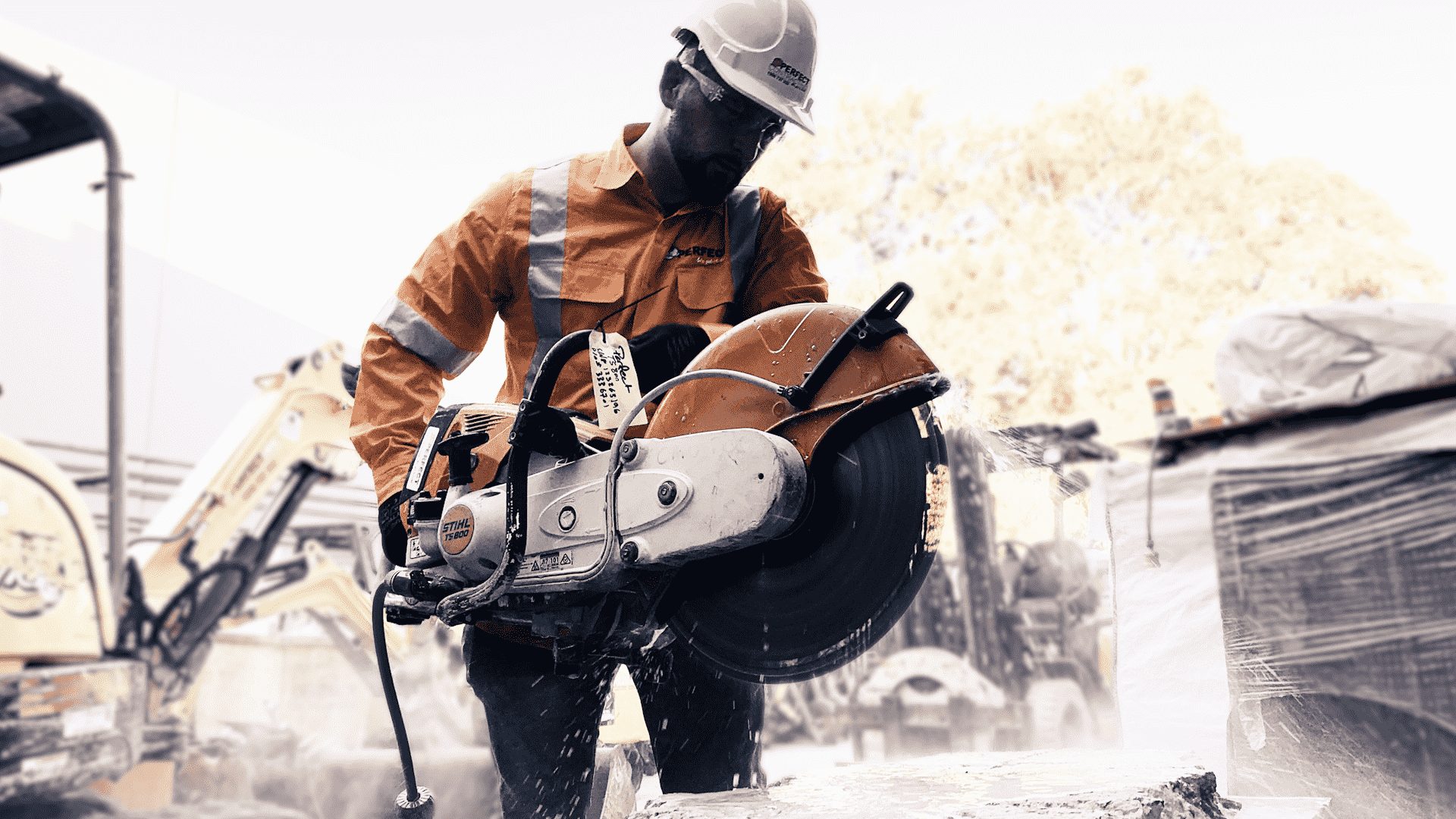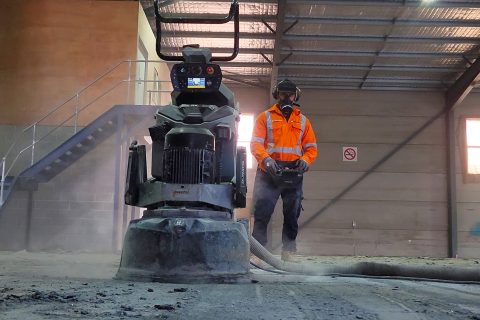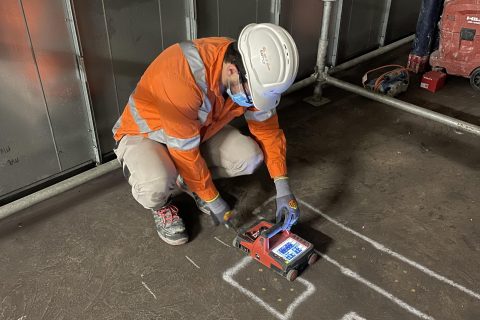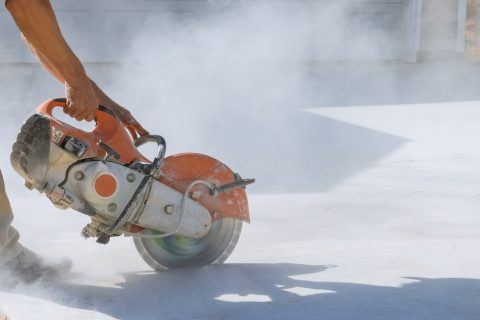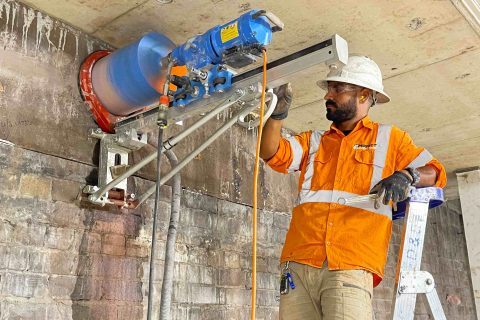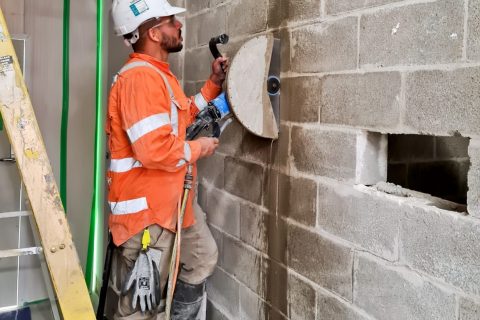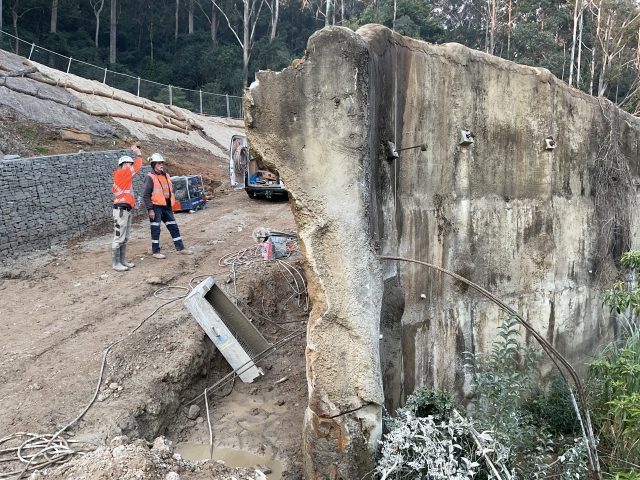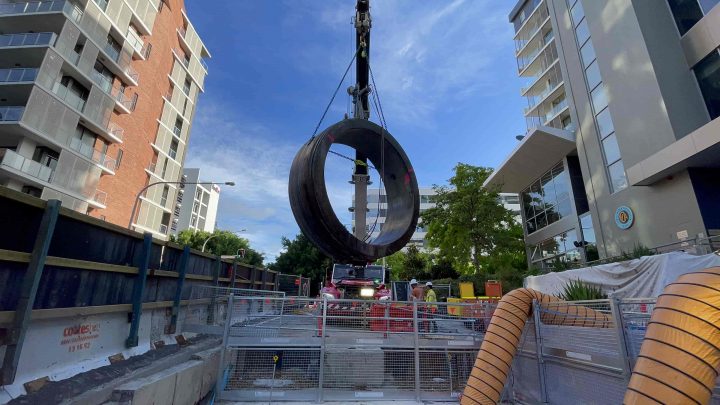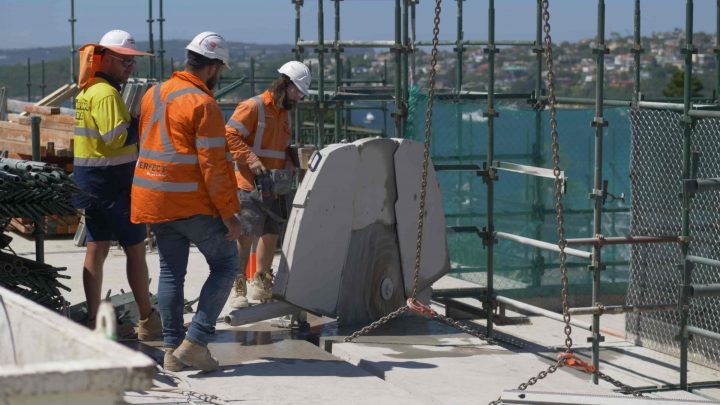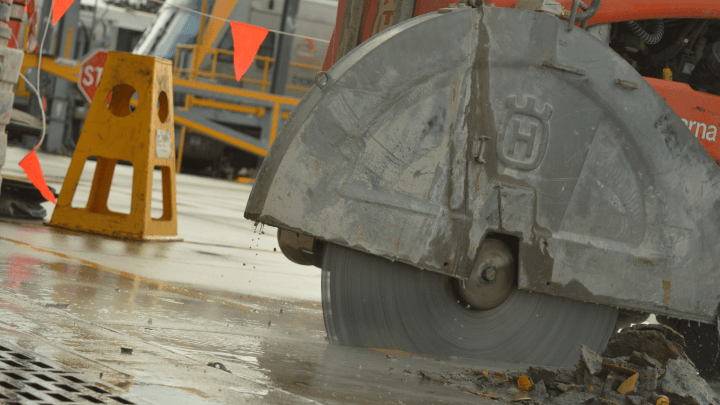By Daniel Green
Aussies are always keen to have a go and home improvement projects are no different. We’ll build it, paint it, trim it. Heck, we’ll even furnish it. We’re also having a go at concrete hand sawing. With a rental hand saw, a splash of two-stroke and a garden hose that old slab taking up valuable real estate could soon be in pieces.
Cutting concrete is not for everyone – it’s a tough job that demands an equally tough operator – but for those who it is for, stay tuned. We’re about to run through everything we know about using the mighty concrete hand saw.
What Kind Of Hand Saw Should I Get?
That depends. What are you cutting? Is it located outside with plenty of air or is it in a constricted space like a basement? Do you have access to electricity and water? How deep is the cut? These questions and more will determine the type of hand saw you need. There are four main types:
Two Stroke Demolition Saw
As the name suggests this is powered by two-stoke fuel, which is a mixture of petrol and oil. Anyone who knows two-stroke engines understands they make smoky exhaust and a lot of it. It needs atmosphere to vent, meaning it really ought to be used outdoors. It’s also LOUD. How loud? Five chainsaws loud. The demo saw cuts to a depth of 155mm so your concrete can’t be much thicker than that.
Two Stroke Ring Saw
If your slab is deeper than 155mm then as well as the demo saw you’ll need a ring saw. The design of the ring is what allows it to cut to 270mm. Why can’t you just use the ring saw for the whole cut? Because the additional cutting depth comes at the cost of blade stability, a stability that is only there when continuing an existing cut – as opposed to starting a new one. Like the demo saw its two stroke engine is smoky, meaning outdoor use only.
High Frequency Demolition Saw
This is the electric version. Running via a power convertor from a regular 240v wall outlet, the HF demo saw can do everything the two-stroke demo saw can do – just without the exhaust fumes. It’s also slightly quieter but only a little – you‘re forcing a large metal disc through rock hard concrete after all. It cuts to a depth of 155mm.
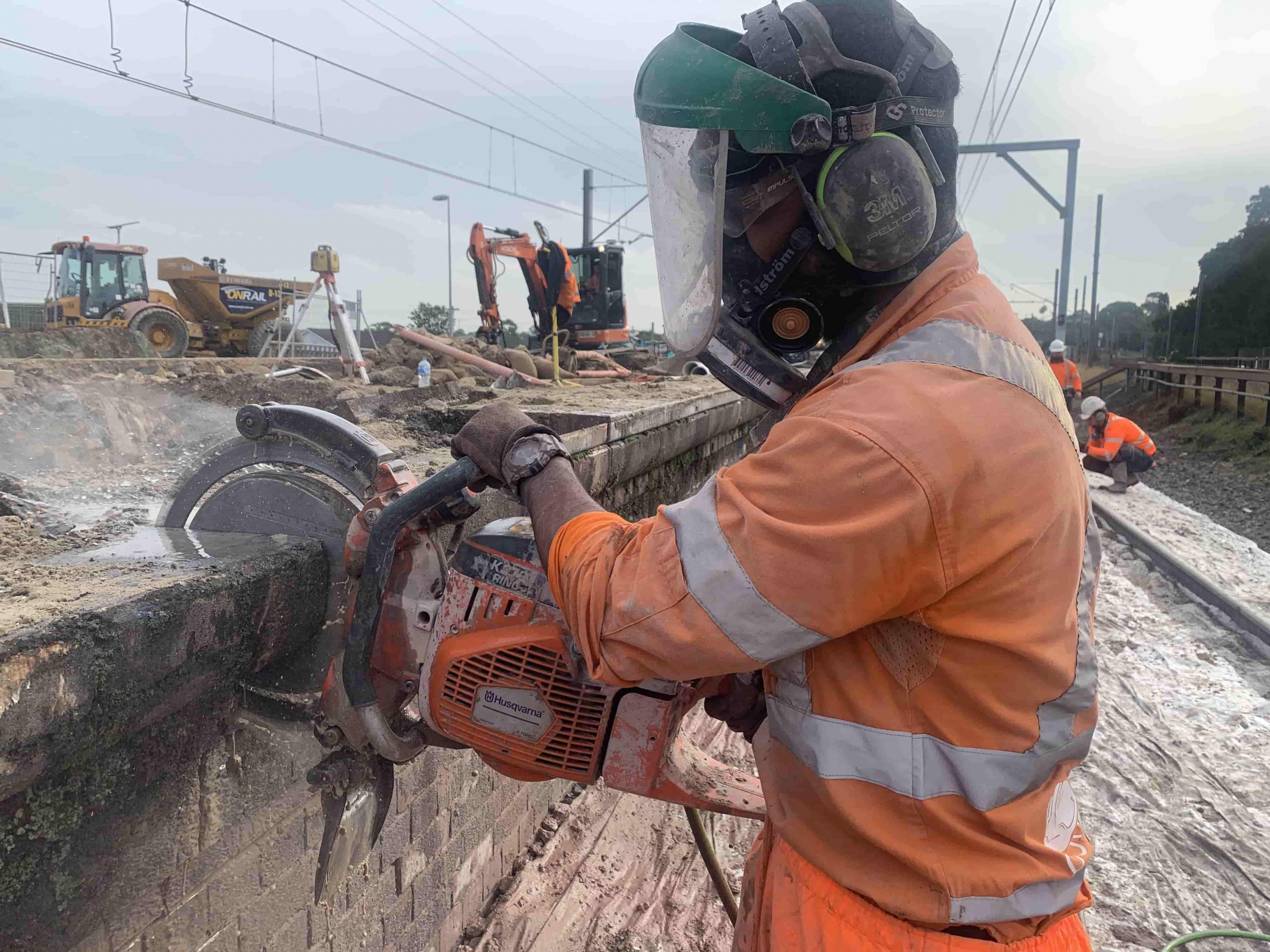
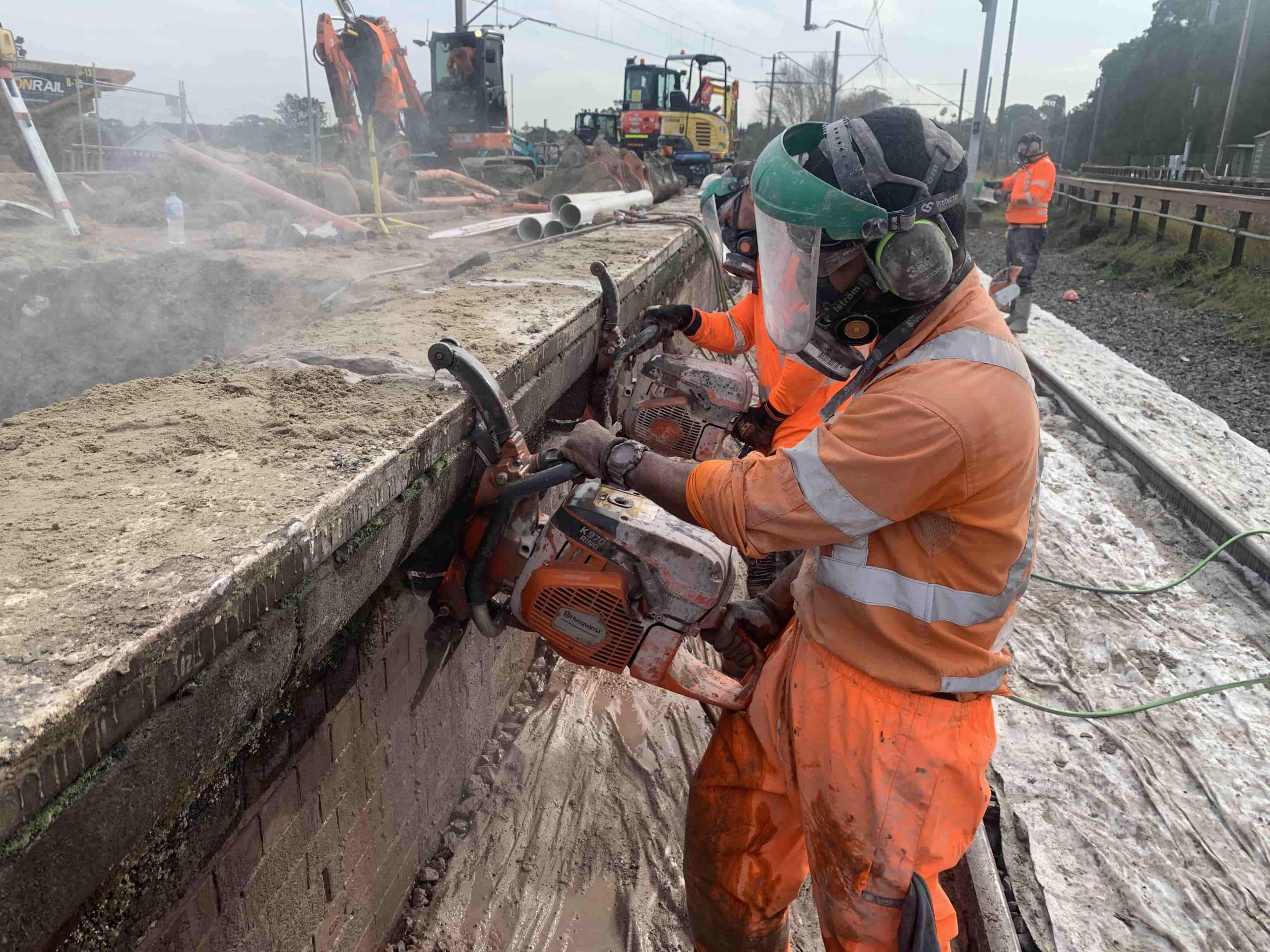
High Frequency Ring Saw
Similar to the two-stroke ring saw, the HF ring is designed to be used in an existing cut to gain extra depth. It cuts to 270mm.
General Saw Notes
Regardless of the type of hand saw there are some general notes for cutting concrete with a hand saw.
- All saws need running water to cool & lubricate the blade and dampen dust. This creates slurry runoff which may need to be captured in some scenarios.
- There will be a mess. Spinning a water-drenched blade at several thousand RPM will spray slurry behind you, in front of you and on you.
- You will need PPE.
- You can get saws that cut deeper than the ones we’ve listed. The bigger the saw the tougher the operator though.
Where Do I Get One?
Equipment hire businesses like Kennards and Coates will rent them to you by the day, the week or even by the month. A quick online search revealed a daily rental is $200 for the machine. Delivery adds $65 each way. Fuel – budget about $50 for a full day.
Planning the Cut
It’s D-Day. You’ve taken the day off work, swung by Coates, hit the BP for some two-stroke and now you’re at home looking at the slab in front of you. What now?
Underground Services
It’s important we take a moment here. Ideally you will have the blueprints to your home and the tradesmen that built it followed them to a tee. In reality though the plans may be lost and the service schedule will vary from the design. In short – you may encounter underground services. The outcome of which can vary from lost internet to damaged infrastructure to permanent injury or unfortunately – death. It is the saw operators responsibility to ensure there are no underground services.
Extra gear. Now that you’ve established there’s no underground services, you’ll need some more equipment. This is to deal with concrete that just won’t break off for some reason, buried rebar and the bath of slurry you’re about to take.
- a crow bar
- a pinch bar
- a sledgehammer
- a lump hammer
- a 5” grinder with a cutting disc or five
- an extension cord
- power
- running water
- steel-capped boots
- long pants or jeans that you don’t care for
- a long sleeved shirt
- a full face mask
- earmuffs, and
- a hat of some sort
Mark your cuts. Unless you’ve got a Bobcat or excavator at your disposal you’re going to need to move the offcuts by hand. Cured concrete weighs 2.5t per cubic metre. It’s recommended the average adult not lift more than 25Kg which works out at exactly 0.01m3.
If you’re cutting a 100mm thick walkway then you could cut each piece into a 50cm x 20cm. They would weigh 25kg, be a good shape to carry and would make things easier on your back. A driveway could be up to 150mm thick, bringing your dimensions down to 33cm x 20cm. If its a floor slab it could be thicker again.
Control your slurry. Depending on where you cut you may need to capture any slurry runoff. Set these measures now so you don’t have to stop mid-cut.
Making the Cut
The services are accounted for, the slab is marked and the hose is plumbed. Following the owner’s manual for the start up procedure, don your PPE and start the saw. Bring the throttle up before you start your cut and gently land the blade on your mark. Move the saw back and forth along the cut mark as you’re cutting. Remember, you’re pushing a spinning disc into cured concrete so expect some resistance. It may [probably will] kick back so expect the unexpected. This is one of those scenarios where the operator has to dominate the machine, not either way around.
After the Cut
So your ears are ringing, you’ve taken a free mud bath and the local wildlife has relocated – but you have cut some concrete! Shut the machine down and set it aside so it can cool. Switch the water off.
Grab your crow bar and begin levering the pieces free of each other so you can assess the situation. With luck you’ve cut all the way through.
Material Disposal
Tipping concrete at a regular dump is hideously expensive so try one of the concrete recycling facilities in the city. These businesses are often far away though, and unfortunately some don’t allow tipping without an account. You can rent a skip but you’ll need to inform the hiring company how much concrete you’re disposing of so that they can send the appropriate truck – and you can save reallocating fees.
Clean Up
As you can imagine there’s a lot of it to do. Slurry is easily cleaned up when wet. It dries rock hard, however. It is concrete after all. Hose everything down, collect any slurry that you need to and pack up the saw. It wouldn’t hurt to wipe the saw down before you return it to avoid cleaning fees.
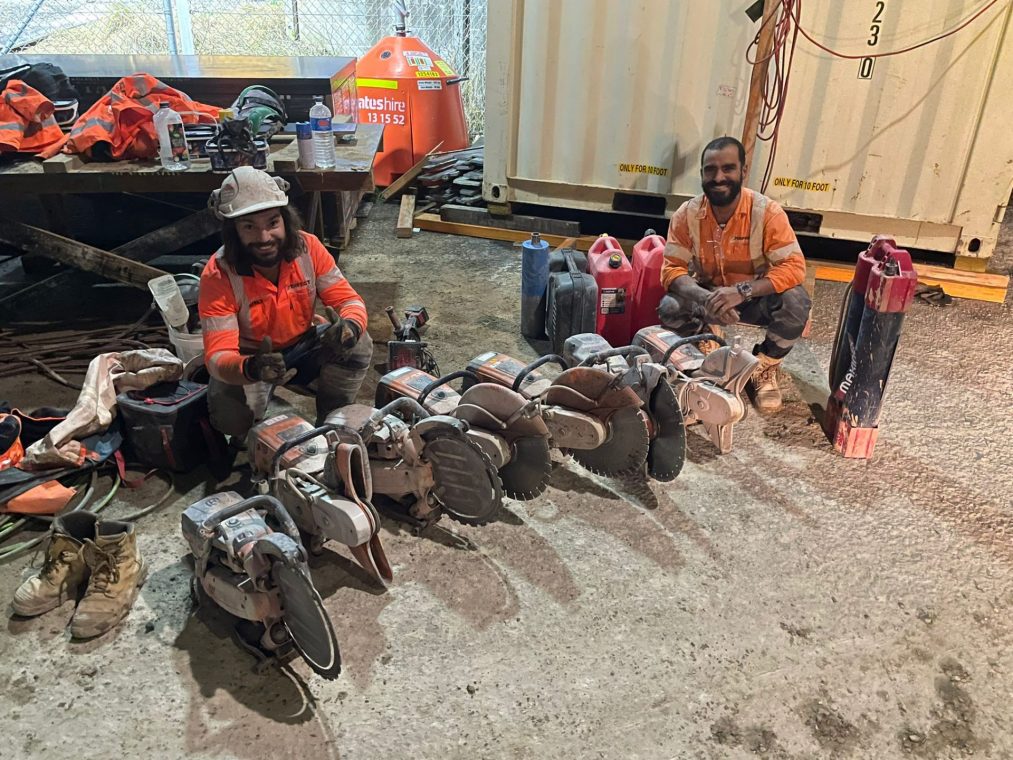
In Conclusion
So there you have it. The complete guide to using a hand saw to cut concrete. If it seems like a bridge too far then Perfect Concrete Care will do it for you. Our team of highly experienced and dedicated concrete cutters will make short work of any concrete cutting scenario you have.
PCC, let us Get It Done for you.

